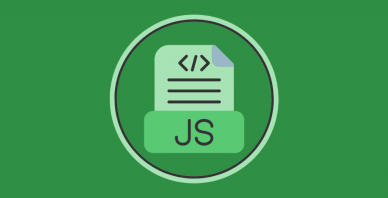Table of Contents
Last update on
Are you looking for the best blogging tips to make your blog more successful and attract a better audience? Starting a blog is an exciting journey, and we’re here to help you make the most of it. We’ve put together 30 essential tips that cover everything you need to know, from content creation and monetization to page speed, SEO, and overall performance.
Plus, we’ve included a bonus section on how to improve the user experience and ensure your blog loads quickly for your readers. Speed is a ranking factor you should pay attention to.
Let’s dive in and take your blog to the next level!
30 Blogging Tips Tricks for Beginners
The best advice for beginners when starting a blog is to provide high-quality content that your readers seek on search engines. To succeed, you must understand your audience, decide what to write about, choose the right publishing platform, and ensure a fast-loading blog to keep your readers happy.
There are many things to cover, right? Thankfully, we have a few guidelines for you! While there is no magic recipe for the perfect blog, you can start with our 30 blogging tips.
1. Identify Your Niche
To keep yourself motivated, write about something you love and are good at. You can expand later, but start small by covering specific topics with low competition.
For example, instead of launching a global travel blog, position yourself with a specific angle like the blog “Kidsontheroad.” They write about kid-friendly hotels and destinations worldwide and rank among the top search results for the Google search term “best kid-friendly hotel”.
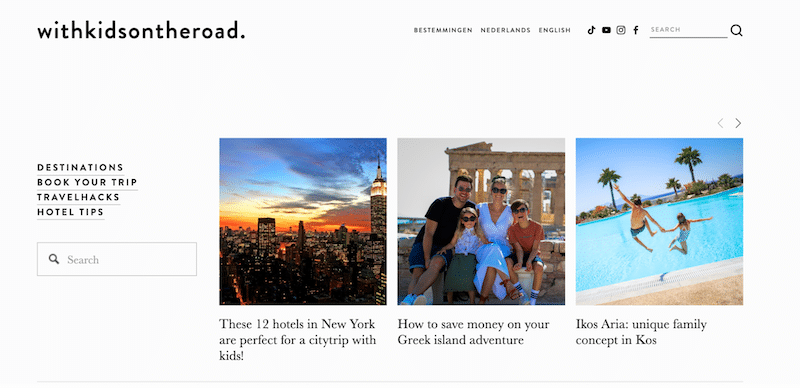
2. Get to Know Your Audience
Understand your target readers and tailor your content to their needs and interests. Writing to match your audience’s expectations is essential to succeed. Now, the question is, how do you get to know them? Here are a few areas to explore:
- Conduct market research and learn about their interests, needs, and goals.
- Perform competitor analysis to find what’s missing on the market and fill the gap with your expertise.
- If you already have traffic on your blog, head to Google Analytics.
3. Choose WordPress as your Blogging Platform
Your platform should align with your technical skills, design preferences, and future growth plans. WordPress is a reliable and popular tool that will not close down in a few months! For example, in 2024, WordPress will still be the most popular content management system, powering more than 43% of websites, so you know that WordPress is not going away anytime soon.
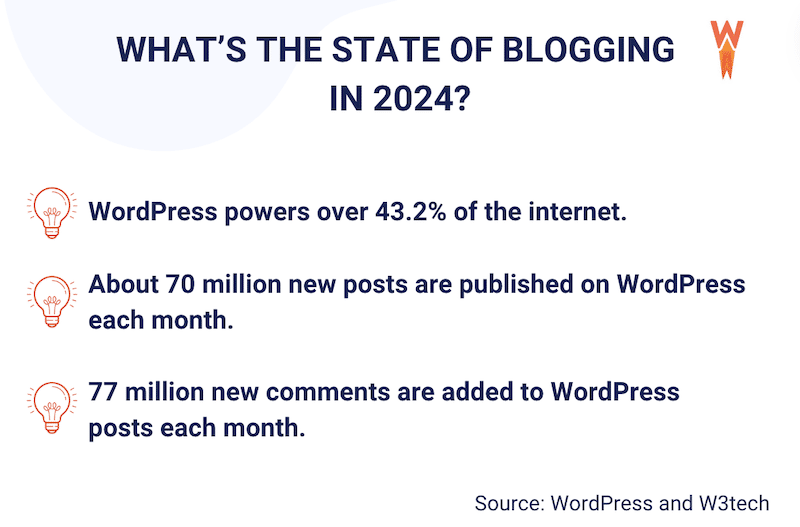
Here are three reasons why WordPress is ideal for blogging:
- It’s a highly customizable platform with thousands of plugins, templates, and themes.
- Its WooCommerce integration: a free plugin that lets you sell physical and online products online.
- It’s ideal for both beginners and those with some technical knowledge.
4. Write Compelling Headlines
Your headline is the first thing readers see, so a compelling headline is a ticket to high click-through rates. The rule is simple: it should be interesting enough for your reader to click on it. In fact, according to Wordstream.com, people read headlines five times more than the actual content.
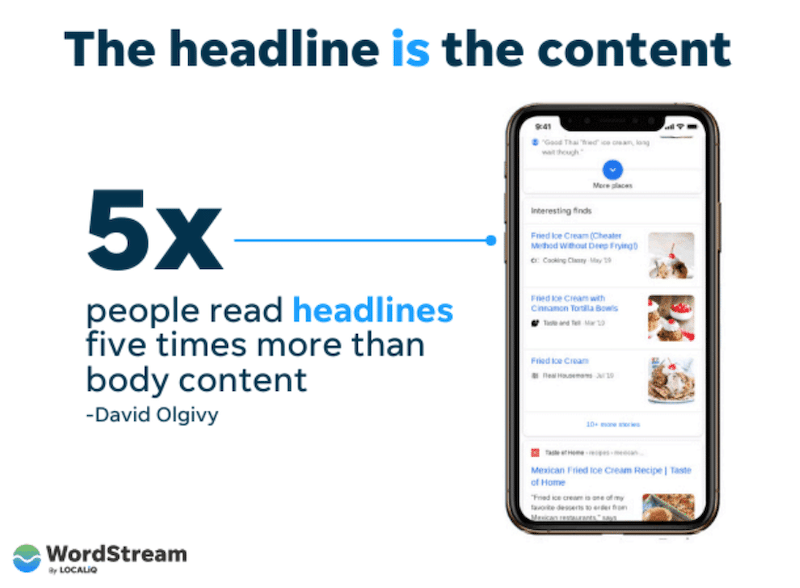
Here are four tips for writing a compelling headline:
- Use numbers and data in your headlines (e.g., 5 Tips for…).
- Address the reader’s pain points (e.g., 5 Tips to Speed Up Your Blog).
- You can ask a question to create curiosity (e.g.: What Should Be Your Next Password?).
- Use powerful words that trigger emotions and develop a sense of urgency (The Ultimate Guide for {topic} or Unlock the Secrets of {topic}).
5. Craft Engaging Introductions
Start your blog post with a compelling introduction that makes your readers want to read more. Many eye-tracking studies show that readers scan webpages in different patterns, one of which is the shape of the letter “F.” That’s why you need to make the top of the “F” (title and introduction) compelling enough to grab the reader’s attention.
As you can see below, the red color indicates where readers spend the most time on a page:

Hook your readers from the start with these tips for a compelling introduction:
- Start with a question or bold statement: Engage curiosity or provoke thought right away.
- Use a relatable story: Personal stories and anecdotes can draw readers in emotionally.
- Present a problem and promise a Solution: Highlight a common issue and quickly tell how your content will address it.
6. Learn the Basics of SEO
Learning the basics of search engine optimization is essential to improving your blog’s visibility and reach. Start by understanding how to use keywords effectively to attract the right audience. Conduct competitor research to see what successful blogs in your niche are doing right. Use internal linking to keep readers on your site longer and boost your SEO. https://wp-rocket.me/blog/seo-tips-blog/
The SEO jargon can be intimidating, but plenty of free SEO training is available to improve your skills.
| 📖 You can also read our 8 SEO tips to optimize your blog posts. |
7. Focus on Readability
Readability encompasses various factors such as writing style, sentence structure, paragraph length, and use of formatting elements like headings, bullet points, and images. Here are some key aspects to consider for improving blog readability:
- Clear and concise writing: Go to the point and use simple language.
- Short paragraphs: Break up long blocks of text into shorter paragraphs to make the content more accessible and digestible.
- Descriptive subheading: Organize your content and guide readers through different blog post sections.
- Bullet points and lists: Use bullet points and numbered lists to highlight key points or steps, making them easier for readers to scan and understand.
- Engaging visuals: Incorporate relevant images, videos, or infographics to complement your text and break up the monotony of the content.
8. Avoid Plagiarism and Quote your Source
Plagiarism is not appreciated in blogging and can damage your credibility and reputation. To avoid plagiarism and appropriately credit your sources, follow these steps:
- Summarize: Rephrase it in your own words.
- Provide proper attribution: Attribute ideas, quotes, or data to their source. Include the author’s name, publication date, and source URL if applicable. For example:
“According to a study by {name of the blog or of the researcher} published on their blog in June 2023…” - Use quotation marks: When directly quoting someone else’s words, enclose the text in quotation marks and indicate the source. For example: “As stated by {name of the blog or of the researcher} on their blog, “quote here”.
- Always link back to the source: Whenever possible, provide a hyperlink to the original source to allow readers to verify the information and give credit to the original author.
9. Cover Popular Search Topic
Always write for your reader’s search intent and ensure every post offers something valuable to your audience. The goal is to rank higher and create relevant content so you can focus your energy on what matters.
Semrush explains four types of search intent: navigational, informational, commercial investigation, and transactional.
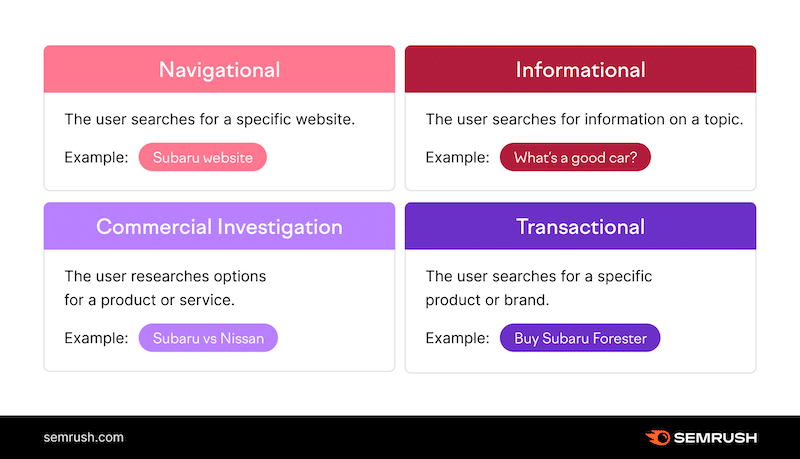
To find the right topics, you can use several interesting tools, such as:
- Semrush — The Keyword Magic Tool has a data column that shows the keyword’s intent type and associated search volume.
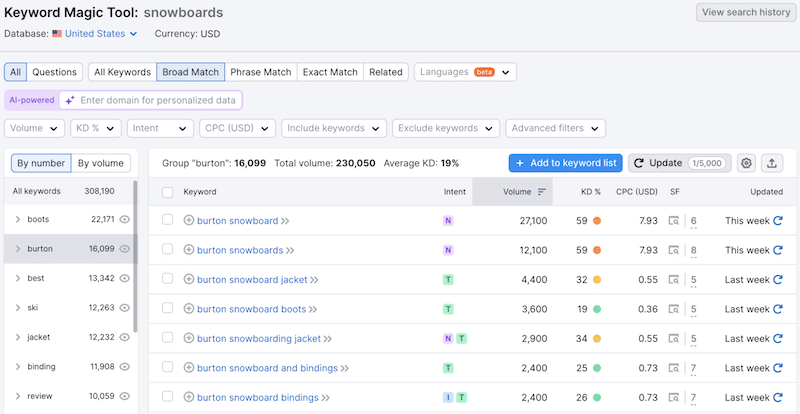
- Ahrefs — It comes with a free keyword generator tool that also tells you the difficulty of the keyword and its potential traffic.
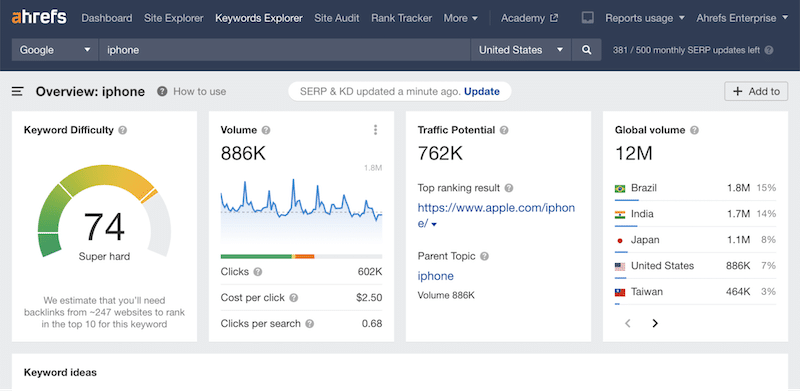
- Moz — It gives you top suggestions, monthly volume, organic click-to-rate (CTR), and keyword difficulty.
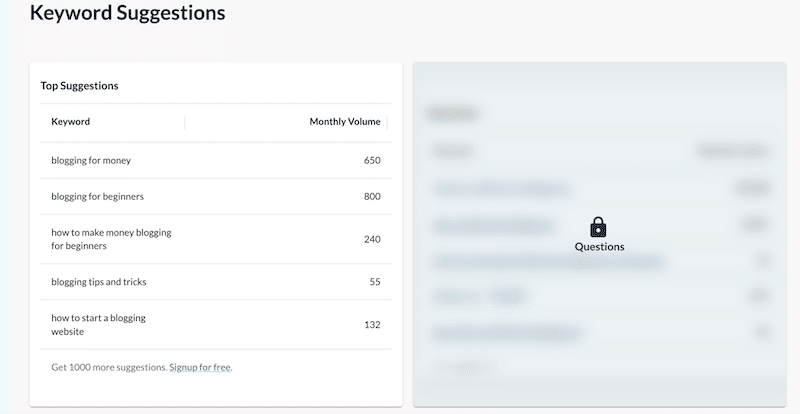
- The “People also asks” Google section – It gives useful suggestions about questions related to the topic you’re analyzing.
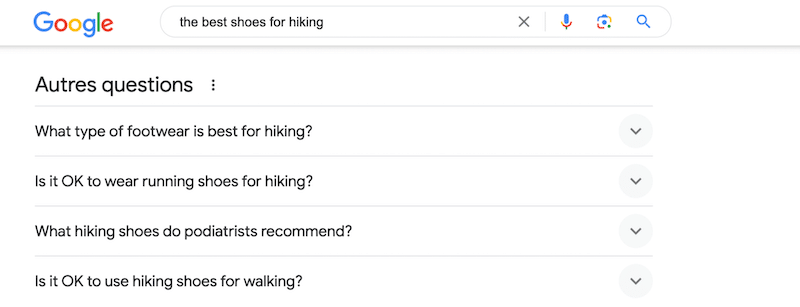
10. Create a Content Calendar
Try to plan your content and use a content calendar to organize your topics, post dates, and any relevant events or holidays.
For example, imagine you own a travel blog and write mainly for French readers. They have many long weekends in May, and according to Tendancehotellerie.fr they book a trip three and a half months before their vacation departure date.
So, you could write a “Top 10 destinations for the May long weekends” in February.
11. Focus on Quality Over Quantity
Quality content engages your audience and earns credibility and trust, increasing readership and better SEO rankings. That being said, consistency is still important for SEO. Aim to post at least once a week to maintain a steady presence and see proper SEO results.
12. Choose a Responsive Design that Fits Your Niche
Selecting a design tailored to your niche is essential for creating a positive user experience on your blog. With WordPress, you can access various themes designed for various industries and preferences. Head to the themes section of WordPress.org and filter the free themes using the “blog” tag:
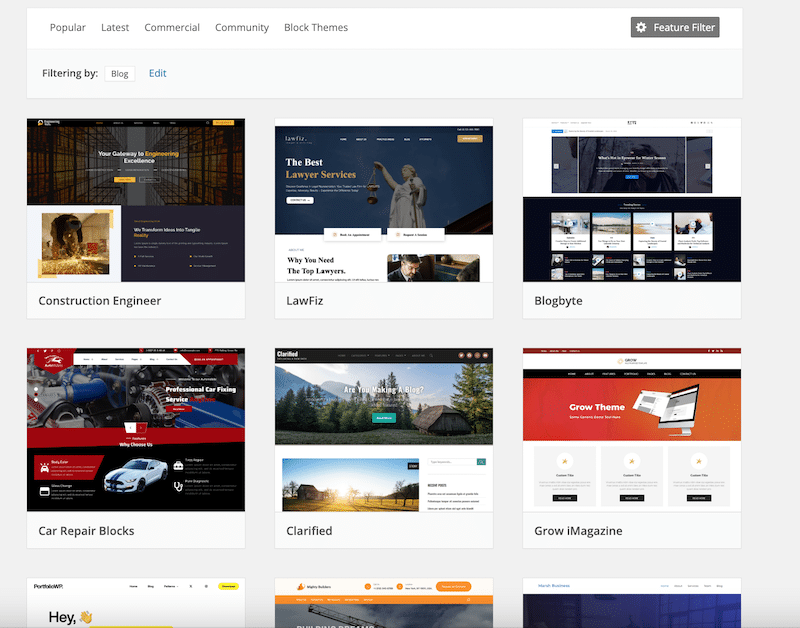
For example, if you’re blogging about architecture, opt for a minimalist design that effectively highlights your portfolio and projects. As a web designer, consider themes with impressive effects and animations to showcase your creativity and skills.
Regardless of your niche, ensure the chosen design displays well on mobile devices.
13. Make Navigation Easy
Ensuring smooth navigation on your blog is crucial for effectively engaging your audience. Features like « related posts » and clear categories facilitate content discovery, while a user-friendly search function aids in finding specific topics.
14. Use Clear Fonts and Layouts
Simplicity is key in font and layout selection, with clear and legible options like Arial or Helvetica enhancing readability. Avoiding overly decorative fonts and cluttered layouts ensures content visibility and minimizes distractions. Your blog post should be visually appealing and accessible reading experience for your audience.
Our example is a bit extreme, but here’s the type of font to avoid when writing a blog post:

15. Optimize For SEO
You are spending a lot of energy on writing, so you want this content to be read. Optimizing your blog for SEO is essential for increasing visibility and attracting organic traffic. To gauge the effectiveness of your SEO efforts, monitor key performance indicators (KPIs) such as:
- Organic traffic growth: Measures the increase in website visitors arriving through unpaid search results, indicating the success of SEO efforts in driving more traffic to your blog.
- Keyword rankings: Shows where your blog posts or pages rank in search engine results for specific keywords or phrases.
- Click-through rates (CTRs) from search results: Measures the percentage of users clicking on your blog’s link in search results.
- Bounce rate: This indicates visitors leaving your site almost immediately, signaling that content isn’t engaging a slow page or visitors aren’t finding what they seek.
- Conversion rates from organic search: This measures the percentage of visitors who complete desired actions (e.g., newsletter sign-ups or clicking on a specific affiliate link) after arriving via organic search.
16. Use Internal Linking
Internal linking is essential for your blog’s SEO because it helps users and search engines understand your website’s structure and the relationship between different pages and content. By linking content between your blog posts and pages, you can pass authority and relevance throughout your site, boosting the visibility and ranking of individual pages in search results.
17. Promote on Social Media
Leveraging social media platforms like Facebook, Twitter, Instagram, and LinkedIn is essential for expanding the reach of your blog content and engaging with your audience. Additionally, actively participating in relevant social media communities and groups can enhance your blog’s exposure and attract new readers.
Many WordPress plugins can assist with social media promotion, but you can also use the free Social Share extension.
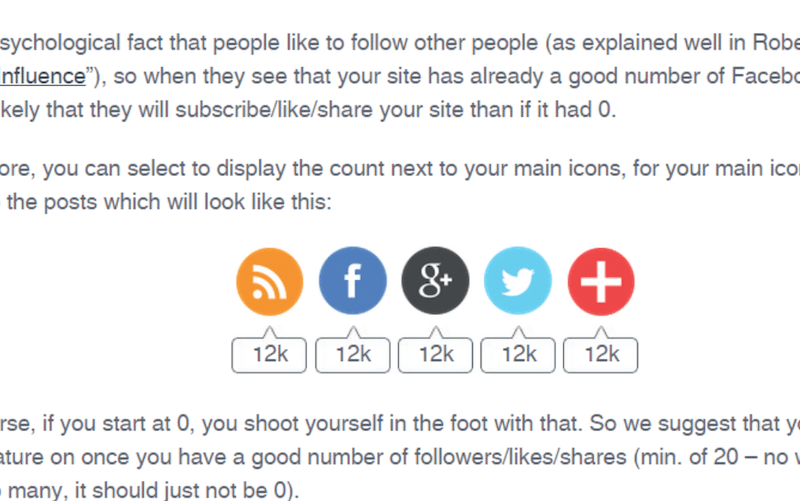
18. Grow Your Email List
Use email marketing to keep in touch with your readers. Build an email list to nurture relationships with your audience and drive repeat traffic to your blog. In exchange for their email, offer freebies like e-books or do something for your readers. For example, Barclays Bank provides a calculator to determine how much you can borrow, and they also capture your email for the sales team.
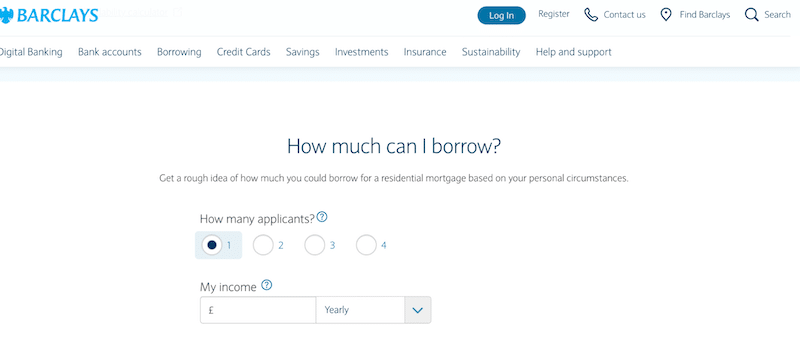
Here are two WordPress plugins that can help you grow your email list:
- OptinMonster: This plugin allows you to create beautiful opt-in forms, pop-ups, and slide-ins to capture email addresses effectively.
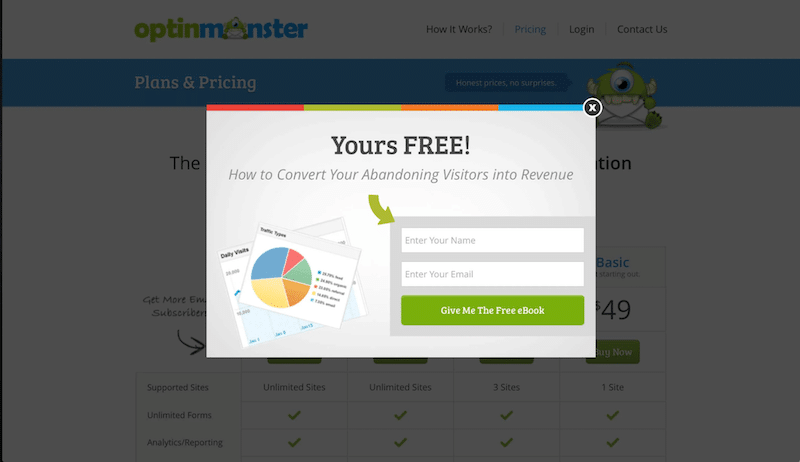
- Mailchimp for WordPress: With this plugin, you can integrate your WordPress website with your Mailchimp account, making it easy to add subscription forms to your blog and sync subscribers to your email lists.
19. Network with Other Bloggers
Networking with fellow bloggers can help you expand your reach, collaborate on projects, and exchange valuable insights and resources. For example, to engage in blogger communities, you can:
- Attend events related to your industry.
- Go live on Instagram with another blogger for some Q&A.
- Organize an online competition with many rewards coming from your community.
20. Use AI Wisely
Integrating AI tools like ChatGPT and Gemini can be incredibly beneficial for bloggers, aiding in tasks such as outlining content or sparking new ideas. However, it’s important to remember that AI-generated content is not always entirely accurate or reliable. It’s essential to supplement AI content with your own research and expertise to ensure the quality and accuracy of your blog posts.
Here’s an example of a blog post outline generated by ChatGPT:
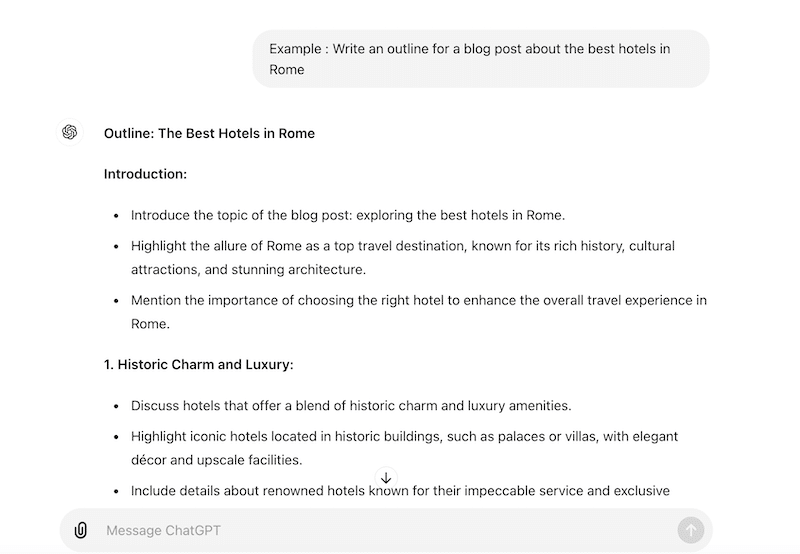
21. Guide Blog Visitors to Take Action
Encourage blog visitors to take action with clear and compelling call-to-action (CTA) buttons or links. Whether they’re inviting them to subscribe to your newsletter, download a free resource, or explore related content, strategically placed CTAs can help increase engagement and conversions on your blog.
For example, you can include CTAs at the end of each blog post or within relevant sections to prompt visitors to take the next step, like Kinsta does in each blog post:
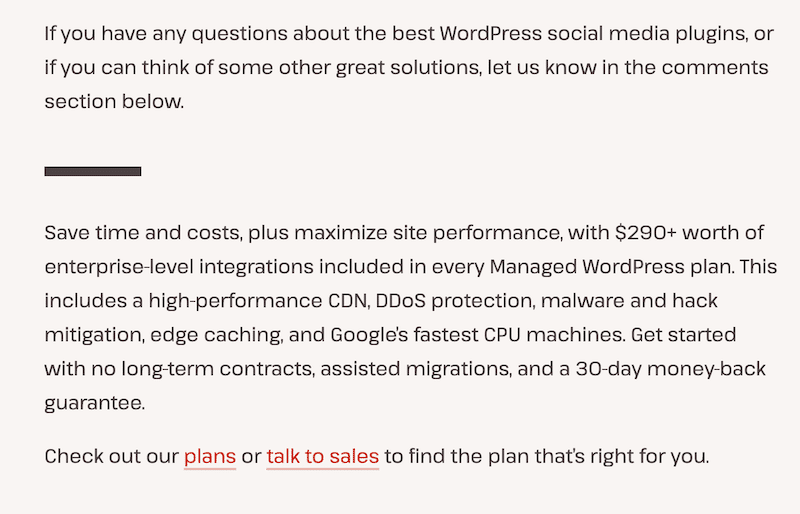
22. Respond to Comments
Responding to comments on your blog post shows that you care and engage with your audience. While you may encounter irrelevant or promotional comments, you’ll also receive valuable feedback and insights from your readers. Take the time to interact with and acknowledge both positive and constructive comments, it will create a sense of community and build stronger connections with your audience.
23. Create Shareable Content
Write blog posts with engaging and shareable content that resonates with your audience. You can incorporate relevant statistics, infographics, or visual elements to do so. Share interesting facts, trends, or insights related to your niche to encourage social sharing, and some posts could even go viral.
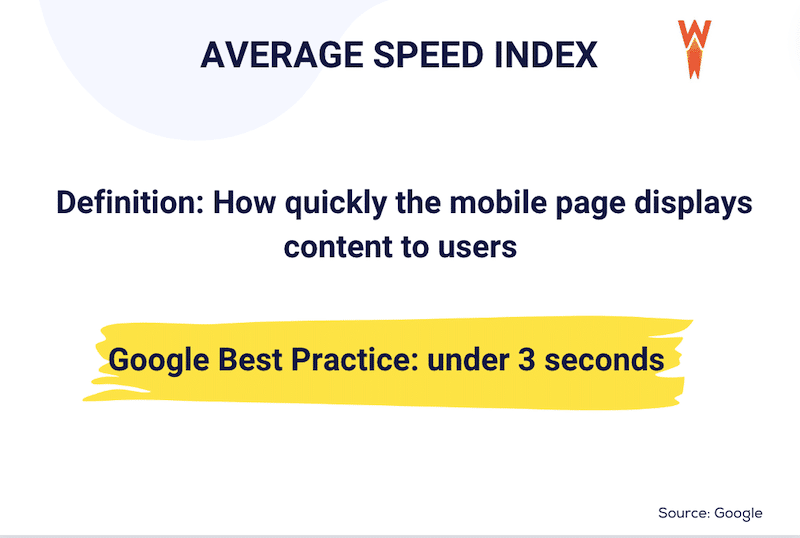
24. Host Interviews
Invite influencers, industry experts, or personalities relevant to your niche for interviews. You can feature insightful discussions, tips, or stories that provide value to your audience. Consider starting a podcast in parallel with your blog to offer a dynamic and engaging format for interviews and discussions.
25. Organize Contests and Giveaways
Engage your blog community by organizing contests or giveaways with amazing prizes. You can collaborate with brands or sponsors to offer exclusive discounts, products, or experiences as rewards. Encourage participation and social sharing to increase brand visibility and community engagement.
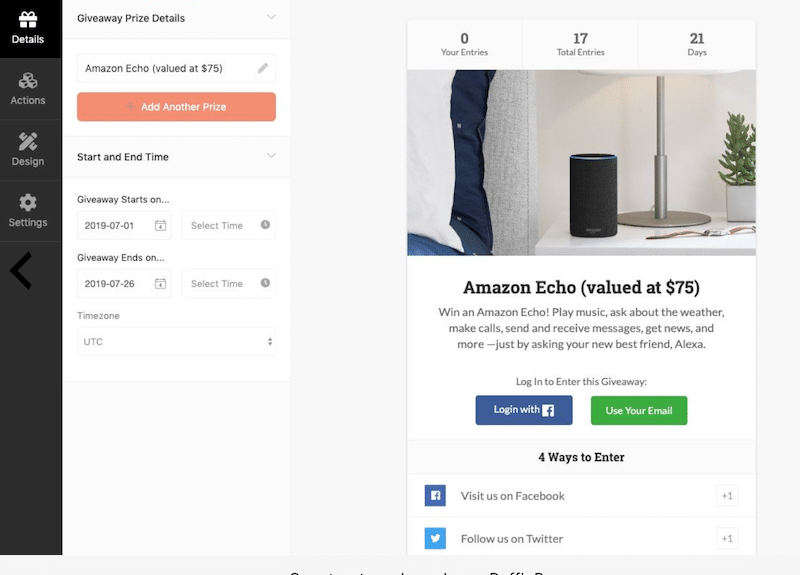
The RafflePress plugin helps you generate more traffic, grow your email list, and boost social media engagement through viral giveaways and contests.
26. Use Analytics and Track Key Metrics
Data and analytics are critical as they provide valuable insights into audience behavior, content performance, and SEO effectiveness, enabling informed decisions and strategic optimization for better engagement and growth. Here are a few metrics (KPIs) you should continuously monitor:
- Traffic on your blog: The total number of visitors and pageviews over a specific period.
- Sources of that traffic: Where your blog traffic is coming from, such as organic search, social media, or referrals.
- Rankings: Track your blog’s search engine rankings for targeted keywords to assess your SEO performance.
- Average time spent on your blog posts: Determine how long visitors typically read your content.
- Conversion rates on the blog: Monitor the percentage of visitors who complete desired actions.
Some powerful tools can help you in this journey: Google Analytics provides comprehensive insights into your website’s performance, including traffic sources and user behavior. At the same time, Semrush offers competitive analysis and SEO tools to optimize your online presence.
27. Explore Monetization Options
Blogging requires significant effort, so why not monetize it? Consider options like sponsored posts and paid product reviews, but prioritize honesty and reliability to maintain your community’s trust. You can also engage in affiliate marketing with clear disclaimers about commissions you take when a reader clicks on the link.
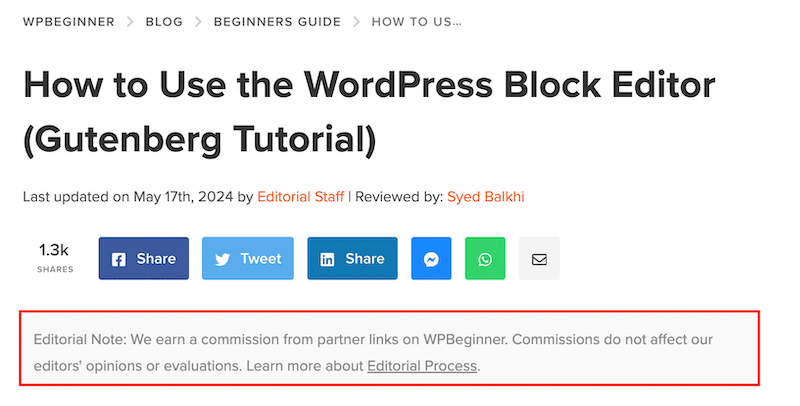
Another idea is to create exclusive content or courses for purchase and leverage platforms like WooCommerce, the top WordPress plugin for selling your products online.
28. Be Consistent but Also Open to Change
Consistency in blogging establishes reliability and trust with your audience, as they come to expect regular updates and content delivery. However, being open to change is equally important, allowing you to adapt to evolving trends, audience preferences, and industry dynamics. Always check what works best, and don’t hesitate to rewrite some old articles to make them rank even better!
29. Optimize Images
Optimizing images is crucial for your blog because it reduces file size without compromising quality, ensuring faster loading times. You can also give your blog a little speed boost by serving images in the right format (such as WebP or AVIF).
You can use a plugin like Imagify to optimize your images in a few clicks. The plugin is easy to use and can bulk-optimize all your blog images from the WordPress interface.
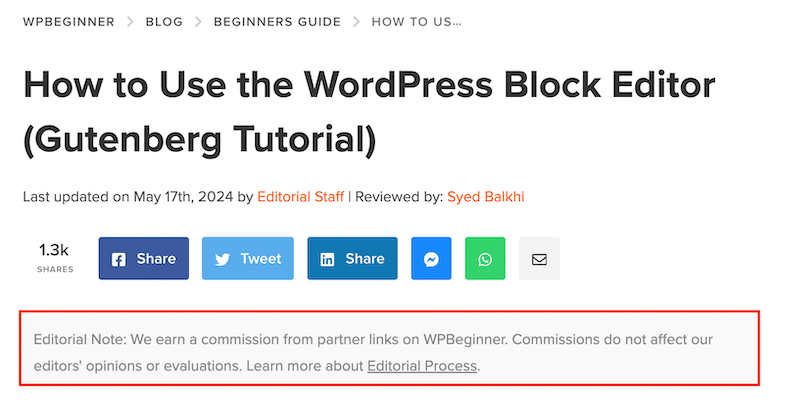
30. Monitor Your Blog Speed and Performance
A fast-loading blog is essential for SEO and user experience, as search engines prioritize websites with quick loading times. Use tools like Google PageSpeed Insights to measure your blog’s performance. Scroll down to the end to read the diagnostics section, which hints at what needs improvement.
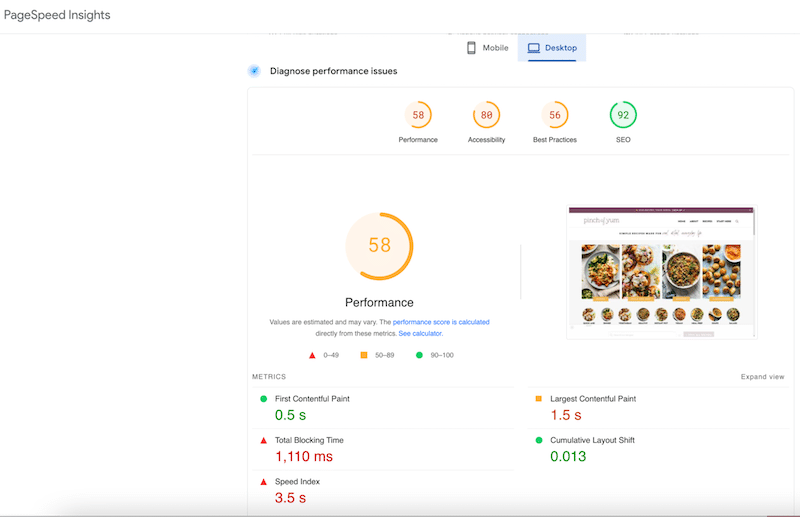
According to research from Strangeloop, 57% of users would leave your blog after waiting for 3 seconds.
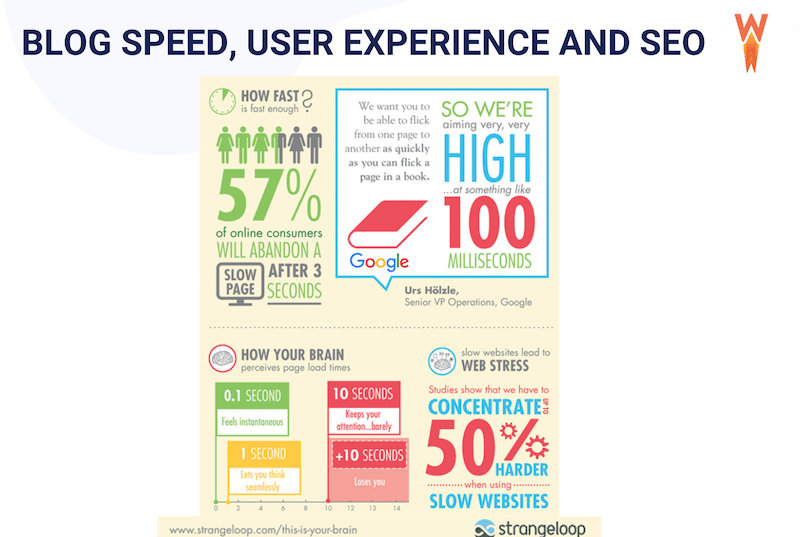
By following these 30 tips, you can build a strong foundation for your blog and set yourself up for long-term success. Now, let’s delve into an equally essential bonus tip: ensuring your blog loads quickly on desktop and mobile devices to keep visitors satisfied and engaged.
Bonus: Speed Up Your Blog With WP Rocket
No one likes waiting for a slow article to load, so having a fast blog is essential. If you choose WordPress as your blogging platform, you gain access to hundreds of plugins that can improve your blog in many ways.
For instance, you can find plugins to boost your SEO, such as Rank Math SEO, or plugins to share your content on social media platforms. If you want to improve your blog’s speed and performance, plugins like WP Rocket can help you achieve that goal.
WP Rocket is one of the easiest ways to speed up your WordPress blog. It’s the perfect plugin for bloggers who do not want to touch any code or do any advanced optimization tasks.
| 🚀 Focus on your writing while WP Rocket optimizes performance for you! |
How WP Rocket improves the performance of your WordPress blog:
- Download the WP Rocket plugin and install it on your blog.
- Activate it. WP Rocket applies 80% of performance best practices upon activation, including caching and GZIP Compression.
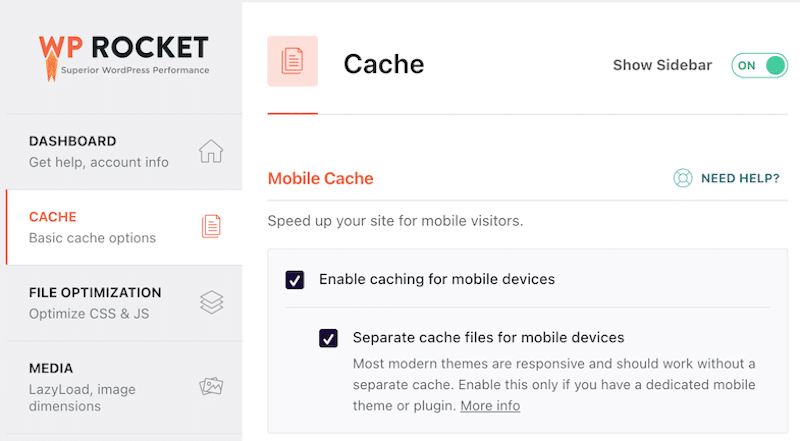
- Activate more speed optimization features directly from your WordPress admin. Simply check the boxes, and WP Rocket will do all the heavy lifting for you.
For example, here are some of the WP Rocket features that can improve your blog’s speed:
- Automatic Caching
Caching is like having a shortcut to information. Imagine you’re baking biscuits. Instead of gathering all the ingredients every time you want to bake, you prepare a batch of biscuit dough and store it in the fridge. When you want a biscuit, you simply take out the dough, shape it, and bake it.
In blogging, caching works similarly.
Instead of rebuilding your entire webpage every time someone visits your site, WP Rocket stores a ready-made version of your webpage. So when a visitor comes back or visits another page, your site doesn’t have to load from scratch—it just serves up the pre-made version, saving time and making your blog load faster.
- Code Optimization
Behind every blog post, a structure of HTML, CSS, and JavaScript work together to create the visual and interactive experience you see on the front end.
For example, WP Rocket optimizes your website’s code to make the content load faster. Your blog can benefit from an extra speed boost through the following optimization techniques:
- Code Minification – Trims down unnecessary characters and spaces in your CSS and JavaScript files, making them smaller and faster to load.
- Reduce Unused CSS – Removes all the CSS not critical for displaying your blog post correctly.
- Delay JavaScript Execution and Load JavaScript deferred – Delays the loading of all JavaScript files until the main content has loaded. WP Rocket prioritizes the most important content to present to your reader.
- Lazy Loading
Lazy loading is like a smart way of showing images and videos on your blog. Instead of loading all the media at once, which can slow down your webpage, lazy loading only loads images and videos when they’re about to come into view.
So, if someone is scrolling down your blog post, the media will only load when they’re just about to appear on the screen. This makes your blog load much faster because it doesn’t have to load all the images at once.
WP Rocket offers lazy loading, and you can apply it to your blog images and videos in one click:
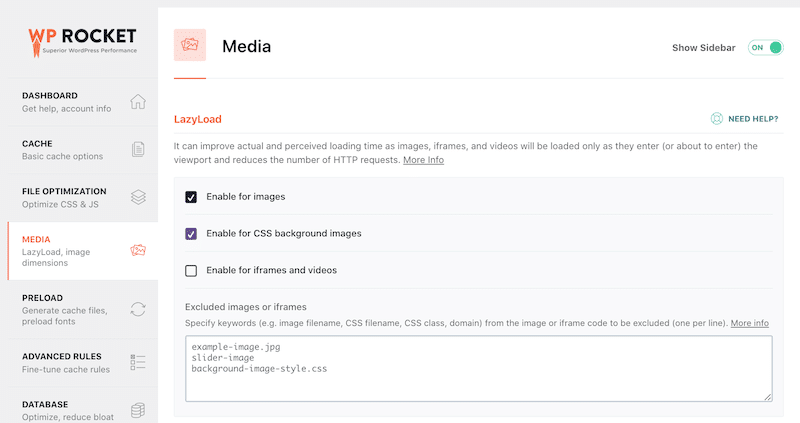
| 🚀 With WP Rocket, you can quickly improve your blog’s speed, increase your chance of ranking better on Google, and ensure a better experience for your readers. |
Wrapping Up
You can now master essential aspects of successful blogging, from SEO and content creation to monetization and performance. With WordPress, blogging becomes super easy, and following our tips will help you stand out from the competition.
Don’t forget to consistently monitor your blog’s speed and use WP Rocket to ensure a fast and seamless experience for your readers. Best of all, no coding skills are needed, and with WP Rocket’s 14-day money-back guarantee, there’s no risk in trying it.


